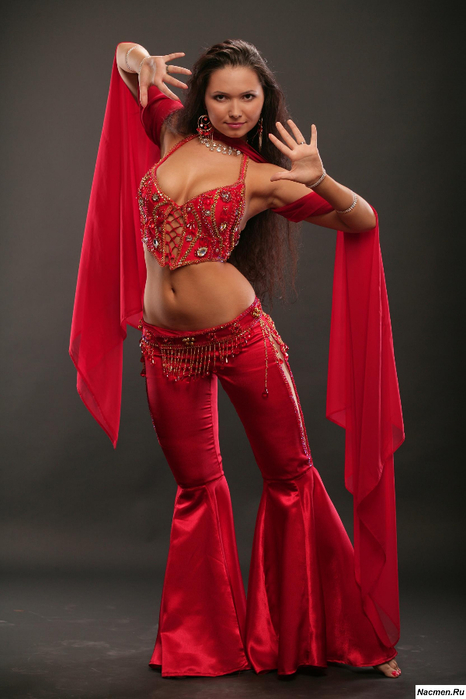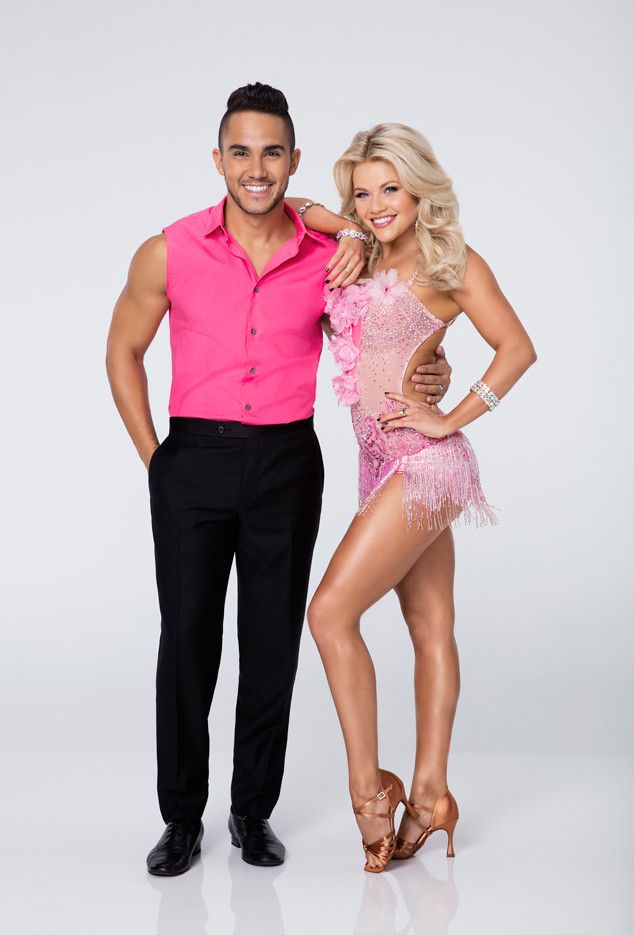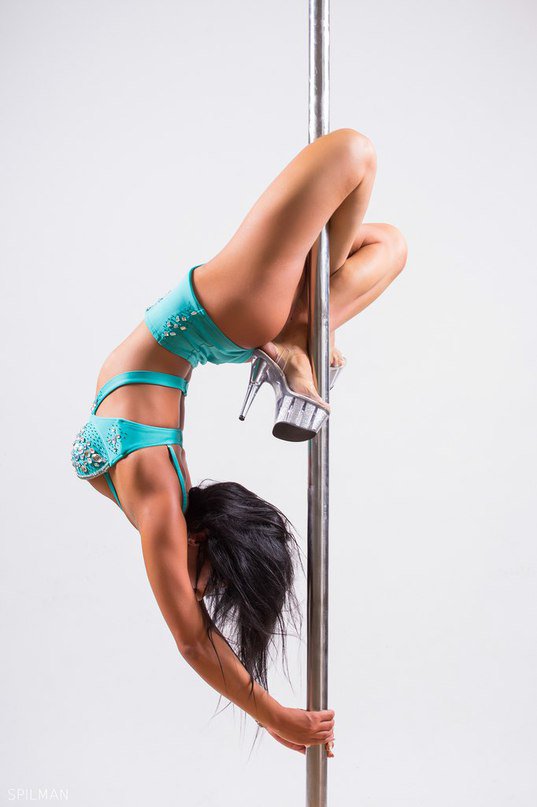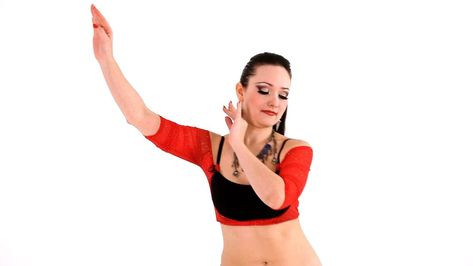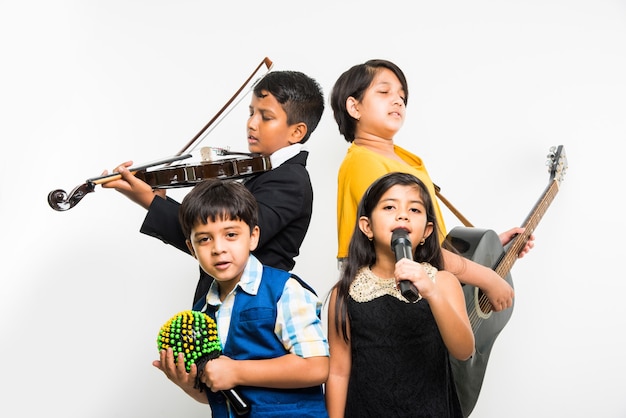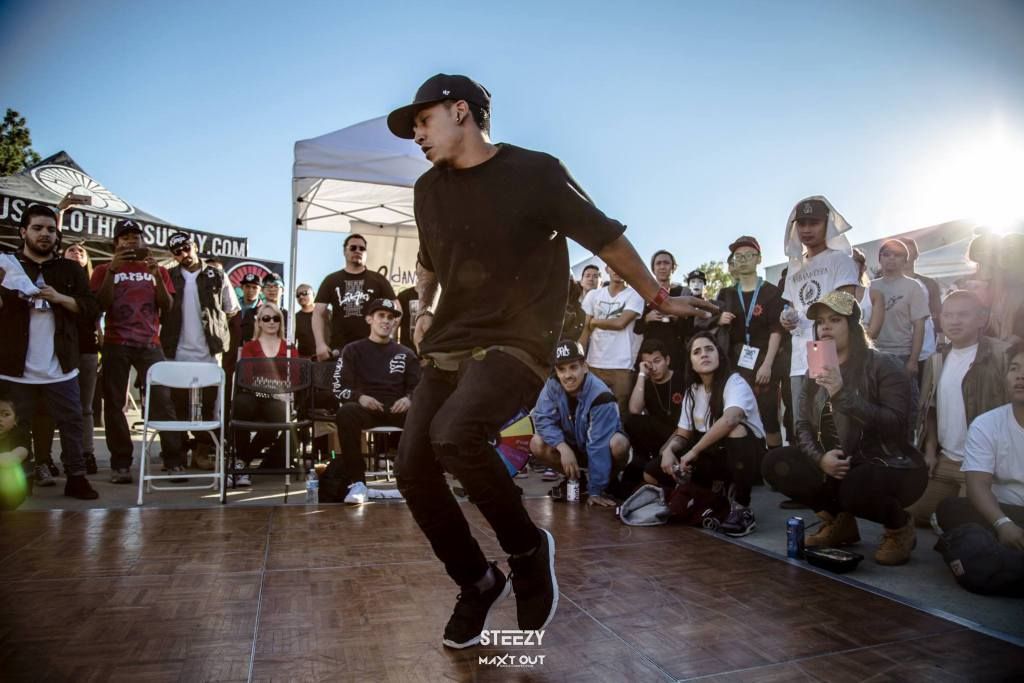How to swing dance for beginners
How To Swing Dance For Beginners (Step By Step Guide)
Table Of Contents:
Swing Dance History & Character
How To Count In Swing
Swing Basic Step #1 – Video
Swing Basic Step #2 – Video
Learning how to Swing dance isn’t rocket science…
Like all Ballroom dances, Swing dancing is based on specific basic steps that once mastered can be applied to all kinds of turns, hand swaps and spins. Below you will learn the 2 main basics steps of Swing.
What is Swing Dancing?
This style of Swing is East Coast Swing which originates from Lindy Hop. It is a Stationary partner dance that doesn’t travel much – Meaning it is pretty much danced on the same spot – As opposed to a traveling Ballroom dance like Waltz. The character of this dance is playful and lively. There are a lot of turns and spins that make this dance really fun for couples.
Swing Songs To Practice To:
* Many of the popular songs played on the radio fit this dance including:
Zac Brown Band – Loving You Easy – Slow Tempo
Michael Bublé – Haven’t Met You Yet – Faster Tempo
How To Count The Swing
Beginner Way of Counting the Swing:
Rock Step, Triple Step, Triple Step.
The Count using numbers:
1,2 (Rock Step), 3 a 4 (Triple Step), 5 a 6 (Triple Step).
* We strongly recommend that you count in the beginner way for a while. However, it is important to understand that the rocks step has two full weight changes to 2 beats of music. And the triple steps (3 a 4 Or 5 a 6) have three weight changes to only 2 beats of music. This makes the triple steps faster.
How to Swing Dance – Basic Step #1:
Breakdown of the Swing Steps (East Coast)
Men:
Starting with left foot
Rock step – Step back with left and replace on right.
Triple step to left – Side, close, side (left, right, left)
Trip step to right – Side, close, side (right, left, right)
Women:
Starting with right foot
Rocks step – Step back with right and replace on left.
Triple step to right – Side, close, side (right, left, right)
Triple step to left – Side, close, side (left, right, left)
The Lead:
* Connect fwd to each other before starting to dance.
Leaders: Apply pressure fwd using the entire body but mostly the left arm (For the rock step). Make sure to extend the elbow slightly. Now, after the rock step, using your body weight and right arm connection, lead the followers to triple side steps in both directions. Ladies, don’t anticipate the lead – Simply connect forward to your partner to feel his lead.
Basic #2: Swing Outside Turn (Right Underarm):
Breakdown of Outside Turn (Above)
Men:
Starting with left foot
Rock step – Step back with left and replace on right.
Triple step to left – Side, close, side (left, right, left)
PIVOT 1/4 to left (On left foot)
Trip step to right – Side, close, side (right, left, right)
Women:
Starting with right foot
Rocks step – Step back with right and replace on left.
Triple step to right – Side, close, side (right, left, right)
PIVOT 3/4 to right (On right foot)
Triple step to left – Side, close, side (left, right, left)
The Lead:
* Connect fwd to each other before starting to dance.
Leaders: Just like in the most basic step, extend your left arm to the followers to allow her to do her Rock Step. Immediately after, as you do the side triple step to the left – raise the left arm just above the follower’s head (indicating a turn coming up). Now on count “&” circle the left arm over the follower’s head as she turns underarm. Make sure to extend your arm to clear your partner’s head.
Other Swing Moves you should learn:
– The Inside turn
– Changing hands behind back
– The Cuddle turn
– The Stop and Go
– Kicks & Flicks
Check out all our Swing dance lessons
Want More Dance Lessons?
We offer a membership that includes access to 300+ Ballroom and Latin dance videos online.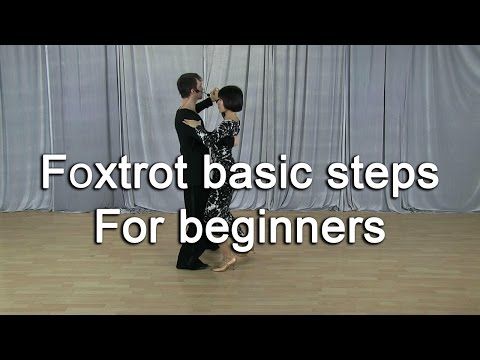 Including American & International style videos.
Including American & International style videos.
Membership Info & Registration
Get More Dance Lessons:
How to Ballroom dance For Beginners
How To Cha Cha Dance
Rumba Dance Steps
How To Waltz
Salsa Basic Steps
How To Dance Bachata
How To Dance At Weddings
Beginners, Read This First! - SwingDance.LA
Swing dancing is one of the most enjoyable and rewarding things I’ve discovered in my life. Maybe you were out and saw some swing dancers at a restaurant, bar, or other event. Or, maybe someone took you to a Swing venue and you want to learn more. Whatever the reason, you’d like to learn how to Swing dance! But, it can be intimidating and hard to know where to start. I hope I can help here.
Amount of Time Required
The first thing you should know is that learning to do any kind of dance will take time and dedication. If you just take one dance class per week and never go social dancing, you’ll forget everything you learned pretty quickly.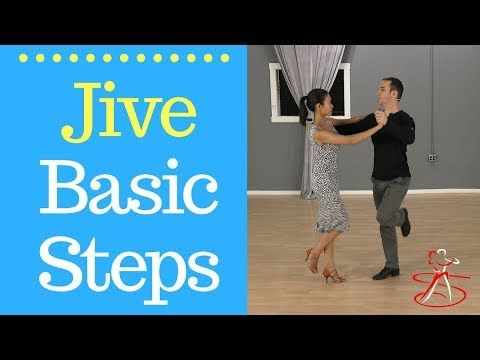 At a minimum, I think you should go social dancing at least two times per week to retain what you learn.
At a minimum, I think you should go social dancing at least two times per week to retain what you learn.
Which Dances to Learn
There are many dances associated with Swing dancing including Charleston, East Coast Swing, Lindy Hop, West Coast Swing, Balboa, and Shag.
I recommend starting with East Coast Swing. That is the easiest one to learn (in my opinion), and it is the most popular and versatile.
Once you’ve got a grip on East Coast Swing, you’ll definitely want to learn Charleston, Lindy Hop, and Balboa. Shag is not quite as common but gaining in popularity and it’s a cool dance. A lot of Swing dancers also do Blues dancing, so I include Blues dancing on my Swing calendar.
For more details on some of these dances, click here.
West Coast Swing
West Coast Swing is an eight-count dance derived from Lindy Hop. But West Coast Swing is in a different scene in L.A. and is not covered by this website. It’s more “ballroomy” than East Coast Swing/Lindy and is danced to more modern pop music, not old Jazz. It tends to have an older crowd.
It tends to have an older crowd.
Where to Take Classes
Many swing venues have beginner East Coast Swing lessons before the main dance, for example, Atomic Ballroom, Lindy Groove, Rusty’s Rhythm Club, and PBDA. Those are a good, low-pressure way to start. Click here for a complete list.
However, it will be difficult to “get good” by taking the same intro class over and over. If you want to improve, take a class series.
I don’t suggest taking Swing classes from corporate places like Arthur Murray. I never see Arthur Murray instructors out social dancing, whereas the people I recommended are active social dancers and are out dancing all of the time. They have a passion for Swing!
If you really want to improve quickly, then you can “jump in the deep end” and attend a Swing camp. The biggest one in Los Angeles is Camp Hollywood at the end of August. The biggest one in Orange County is Inspiration Weekend in March. There is also the LA Shag Festival in April.
These usually have three or four nights of Swing dancing over the weekend with classes during the day. These events are exhausting but fun, and if you attend all of the classes, your dancing level will definitely go up a notch or more! There are so many awesome dances at these events, you’ll improve by osmosis (or more accurately, watching good dancers will improve your own dancing).
Another way to improve quickly is to take private lessons. They are costly, but the personal attention will improve your dancing quickly.
There are some big weekly Swing dances with classes before the dance. I would especially recommend LindyGroove, PBDA, Rusty’s Rhythm Club, and Atomic Ballroom. See my complete list of classes and instructors. If you want to turbocharge your Swing dancing, read the Top Ten Secretes to Becoming a Good Swing Dancer.
To avoid starting a lot of bad habits, read the Most Common Beginner Swing Dancing Mistakes.
Where to Dance
As I mentioned before, you need to go social dancing at least a couple of times a week in order to practice what you’ve learned, or else you’ll forget it.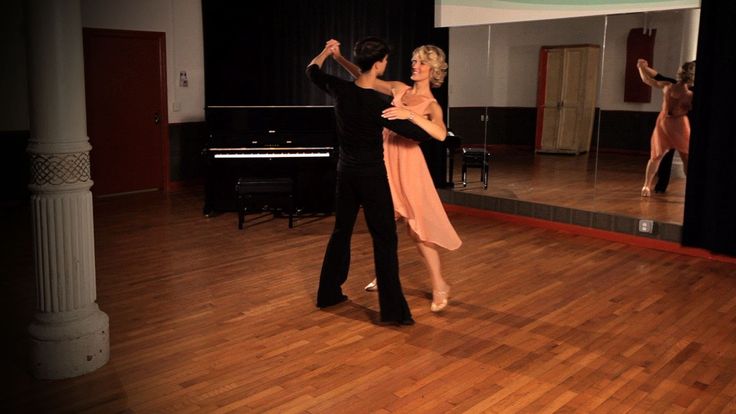
This article has my suggestions for places that usually have plenty of people to dance with and are generally non-intimidating for beginners.
Etiquette
Leaders, avoid doing things that will get you banished from the dance floor. Read the Top Ten Worst Things Guys Do On the Social Dance Floor.
Followers, here are some sure-fire tips to get guys to ask you to dance!
What Shoes to Wear
Check out this article on shoes to wear Swing dancing.
I hope this has helped you take your first steps (or triple-steps!) into Swing dancing. Leave a comment below if you have any questions! – Brian
Swing Dancing: Get Jazzy!
SWING is the general name for dances, as well as the style of clothing, interior, life and behavior that arose with the birth of early jazz music - swing. The term is usually used to refer to one or all of the swing types: Lindy Hop, Charleston, Step, Balboa, Blues and Boogie Woogie, Jive, Rock and Roll, West Coast Swing, Se rock or Le Rock, etc.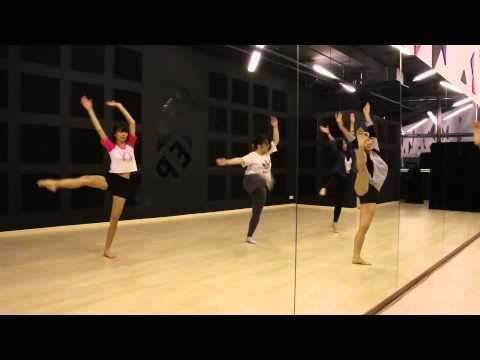 (appeared in the 1940s and later).
(appeared in the 1940s and later).
Things to remember about swing:
- This dance originated in the 1930s. last century in New York. It is believed that the predecessor of swing was rag time - the music of street musicians.
- this is an improvisational dance: a chain of movements is created right on the dance floor. The partner thinks over the dance steps and makes it clear to the partner what he expects from her, and her job is to catch it. No dance will be exactly the same as another.
- it's a party dance. Swing competitions are also held, but the main goal is to dance for yourself.
- it is a dance for communication. The emotions and personalities of the dancers are as important as the legs and arms.
- it's a jazz dance. Knowing how to dance jazz, the dancer feels free with almost any music.
Interest in swing faded in the 1960s and resurfaced in the 1980s with the formation of the World Rock'n'Roll Confederation and boogie-woogie and acrobatic rock and roll competitions.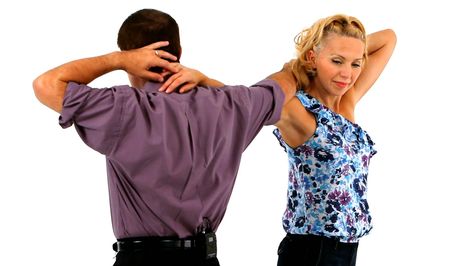 In the 90s, the turn came to the CIS countries. In general, swing dancing is an excellent means of communication between people.
In the 90s, the turn came to the CIS countries. In general, swing dancing is an excellent means of communication between people.
26-year-old from Kiev Alexander Gnidin has been practicing Lindy Hop for six months. He says it all started in a post in a LiveJournal community, where they invited people to join a swing group and posted video links to dancers' performances.
- And since it was in the midst of spring, when you want updates, I decided to go and try it. In addition, the location was convenient, half an hour on a direct metro line from work, the time suited me, and I also watched the video - I was hooked. For me, this is instead of physical education, plus new acquaintances, new horizons and impressions, - says Sasha.
Apparently, Sasha is not alone in his desires for new horizons and impressions - for example, there were about 40 people at the boogie-woogie class of one of the Kyiv clubs, which I looked at yesterday. Well, last Saturday, November 14, a qualifying competition was held in Kyiv under the funny name "SUSYUKS-2009" (an abbreviation for "So You Think You Can Swing?") - for the right to be called the best swing dancers. The idea and format were borrowed from the Ukrainian TV show “Everybody Dance”, which, in turn, adopted the concept of the American TV show “So You Think You Can Dance?”
The idea and format were borrowed from the Ukrainian TV show “Everybody Dance”, which, in turn, adopted the concept of the American TV show “So You Think You Can Dance?”
The event took place in the assembly hall of the 1st building of the Kiev-Mohyla Academy. Everyone could take part (fee - 30 UAH per person, for spectators - 20 UAH). Everything in general looked very sincere: a cozy hall, smiling people, great music and a lot of positive. At first, the people danced just like that, for a warm-up, then competitive dances began. About 50 dancers took part in the competition.
Under the approving but exacting gaze of the jury, they went through three rounds - as a result, the four best couples were selected. In two weeks, the guys will compete with competitors from Kharkov and Moscow, who will come to us for the finals of the SUSYUKS.
"Our Kyiv" asked Andrey Terentyev, one of the founders of "Kiev Swing Dance Club", about swing in more detail.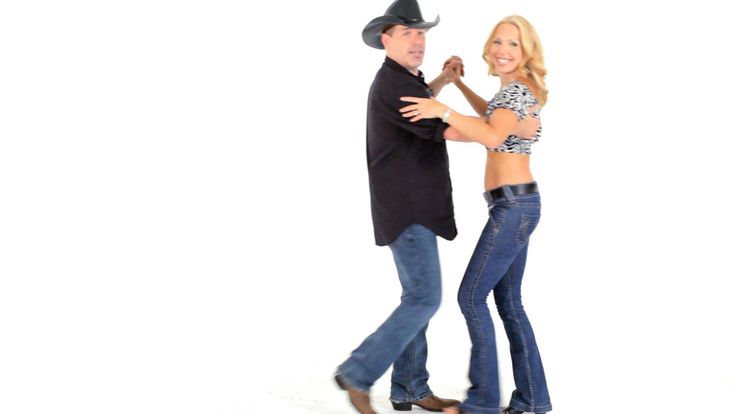
NK: For the uninformed, tell us what swing is?
There are several directions of swing dances, but more often the swing dance means the Lindy Hop dance, which was popular in the 30s of the last century. Also styles of swing dances - balboa, shag and others. Boogie-woogie and west coast swing, as a rule, are also classified as this direction, although they are danced to non-swing music: boogie-woogie - to rock and roll, blues and boogie-woogie, and WCS - to modern pop music .
NK: When was the Kyiv club founded and whose idea was it?
The name "Kiev Swing Dance Club" originated in 1998, when a few enthusiasts began to practice from video cassettes and learn how to dance swing. But the Club, as we know it now, emerged in 2003, after Taras Melnik, Larisa Glikina and I began to develop it, hold parties and attract new dancers to our ranks.
NK: How long does it take for beginners to learn the simplest dance?
To master the basics, a few months of classes are enough.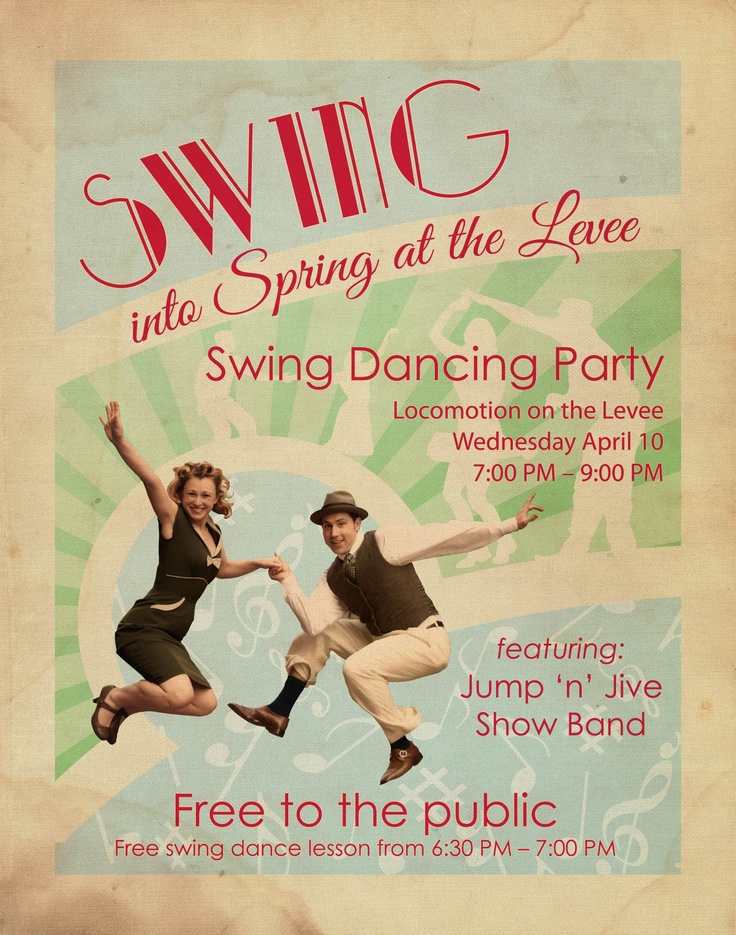 But in order to learn how to dance well, it will take at least several years of training.
But in order to learn how to dance well, it will take at least several years of training.
NK: More boys or girls come to class?
I can only talk about boogie-woogie bands. We usually have more partners in the first month of classes, sometimes the proportion of partners and partners in the first month is one to two. But then, within a month, the balance usually levels off. Now we have an almost equal number of partners and partners at almost all levels. I explain this by the fact that rock and roll and boogie-woogie, like music and dance, attract both guys and girls to the same extent.
NK: How many people are recruited into one group?
Usually about thirty. In my experience, this is the optimal size of the group, during the training there is a good dynamics of the lesson, because the dancers learn not only from the teacher, but also from each other. Senior groups are usually a little smaller - 10-20 people.
NK: They say that in boogie-woogie the main thing is improvisation and interaction in pairs.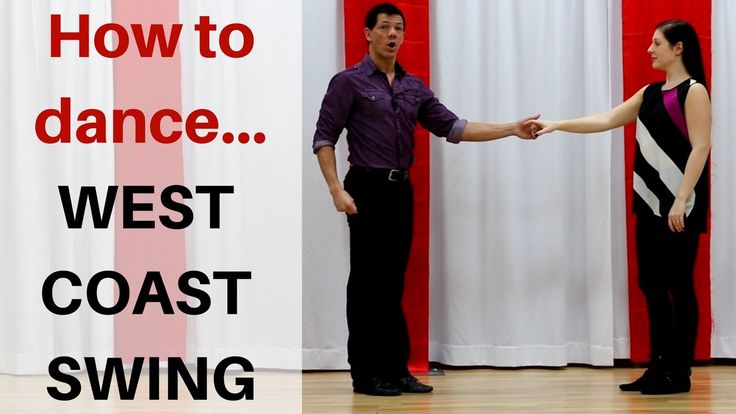 And if a person does not know how to improvise?
And if a person does not know how to improvise?
Improvisation is a skill just like learning to ride a bike or swim, only more creative. When, after several months of practice, you stop thinking about where to put your foot and how to lead the partner correctly (or follow the partner correctly), then your brain is freed for something more, you begin to improvise and hear music. Therefore, my advice is to practice more, listen to the music you dance to more often, and work on the foundation: the main step, leading-following.
NK: What do these dances give you personally?
Dancing is the joy of communication, freedom and positive emotions. Boogie-woogie and all swing dancing is a dance drug! After several months of regular exercise, almost 100% addiction is ensured. At the same time, you can observe a number of “side effects”: an uncontrollable smile on your face and unreasonable bouts of good mood, a change in gait in the “step-step-triple-step” style, involuntary movements of the limbs with the sounds of music with a syncopated rhythm (syncope is a displacement of the rhythmic support from a strong beats of a bar to a weak one - ed. ), a change in musical tastes and preferences, and so on. So be vigilant! I came to dancing late, after university. Since then, I can not stop and do not regret it a bit. He worked in IT consulting, then managed a telecom company and worked with mobile operators, then managed a network advertising agency. It was only thanks to dancing that I could withstand the stress of work. It is enough to dance for a few hours, you are charged with optimism and good mood, and all problems become solvable. I recently decided to leave my career and make my favorite hobby my job, and I don't regret it at all.
), a change in musical tastes and preferences, and so on. So be vigilant! I came to dancing late, after university. Since then, I can not stop and do not regret it a bit. He worked in IT consulting, then managed a telecom company and worked with mobile operators, then managed a network advertising agency. It was only thanks to dancing that I could withstand the stress of work. It is enough to dance for a few hours, you are charged with optimism and good mood, and all problems become solvable. I recently decided to leave my career and make my favorite hobby my job, and I don't regret it at all.
On Monday, I went to one of the boogie-woogie classes - Andrey conducts it with his colleague Nadia. At 19:30 on the street. Ilyinskaya, 9, a group has gathered on the second floor, which has been studying for a couple of months. I couldn’t keep up with them, took a few steps at the initial stage, and then the guys split into pairs (two girls didn’t have enough partners, but the teachers helped them) and began to repeat the already learned elements at a rather fast, as in my unprofessional opinion, pace.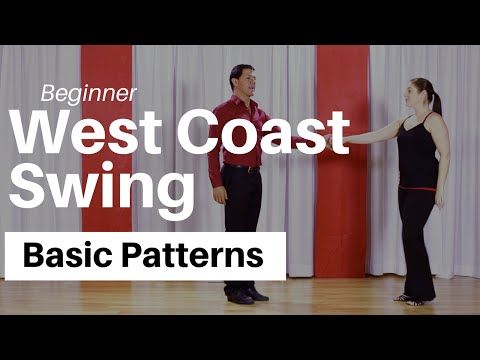 But later, at 20:30, newcomers came, who had been practicing for only a few weeks. And there were a lot of them, as already noted, forty people - mostly young students of student age, but also a few people "under" and "over" thirty. In the lesson, we learned the basic step: “step-step-triple step”. In principle, it is quite accessible if you slowly repeat the movement in parts. Gradually you get used to it, it starts to turn out almost reflexively. It is important to properly position the knees so that they do not hurt later, as they take on a lot of stress during exercise. Yes, a lot of things, to be honest - a sea of subtleties that coaches do not get tired of talking about and showing. Of course, interaction with a partner is also important: to feel where he is leading at the moment - a whole set of exercises has also been developed for this.
But later, at 20:30, newcomers came, who had been practicing for only a few weeks. And there were a lot of them, as already noted, forty people - mostly young students of student age, but also a few people "under" and "over" thirty. In the lesson, we learned the basic step: “step-step-triple step”. In principle, it is quite accessible if you slowly repeat the movement in parts. Gradually you get used to it, it starts to turn out almost reflexively. It is important to properly position the knees so that they do not hurt later, as they take on a lot of stress during exercise. Yes, a lot of things, to be honest - a sea of subtleties that coaches do not get tired of talking about and showing. Of course, interaction with a partner is also important: to feel where he is leading at the moment - a whole set of exercises has also been developed for this.
When you look at the swing pros, it seems that the couple moves easily and naturally, without thinking about anything, almost flies! But in order to learn how to fly like, for example, these dancers, you have to work hard.
Although this process is very pleasant, as it turned out. Although physically exhausting (at the end, most T-shirts are wet with sweat), but morally inspiring. And another trick: when you dance in pairs, you change partners every 5-10 minutes, in a circle. Thus, communication with new people is constantly taking place, eye-to-eye - and this is also more than interesting.
Cost of classes:
One lesson - 50 UAH
Half a month (4 lessons) – 160 UAH
Month (8 lessons) – 280 UAH
Month - 1.5 different groups or directions (12 lessons) - 400 UAH
Month - 2 different groups or directions (16 lessons) - 450 UAH
The club schedule can be viewed here.
Now we are recruiting for a new boogie-woogie group for beginners. Classes will be held on Tuesdays and Fridays at 7pm.:00, the first will be on November 24th.
Before that, they promise a free introductory lesson - on November 20 at 19:30, at the address: Fizkulturny per. , 1 (Institute of Physical Education, 3rd building, 2nd floor).
, 1 (Institute of Physical Education, 3rd building, 2nd floor).
Pre-registration by tel. (050) 311-87-73 or (067) 387-71-77.
Swing (dance) - training, lessons for beginners and more
Swing.School invites everyone to learn how to dance swing - a group of improvisational social dances that are now actively reviving and gaining immense popularity around the world. Episodes with swing dancers can be seen in "La La Land", "Hipsters", "Chicago", "Swing Kids" and many other films dedicated to the era of 1920-1960s. Dance fragments, and sometimes even whole stories, can be found in the work of Bradbury, Sellinger, King and other classics.
Swing is danced at jazz, blues and rock and roll parties. It is because of the rhythmic pulsation characteristic of these musical genres that the dance got its name. At the same time, it continues to develop, and "swing dancers" dance to rhythm and blues, electro swing and other modern music.
The main advantages of any swing dance are improvisation and sociality.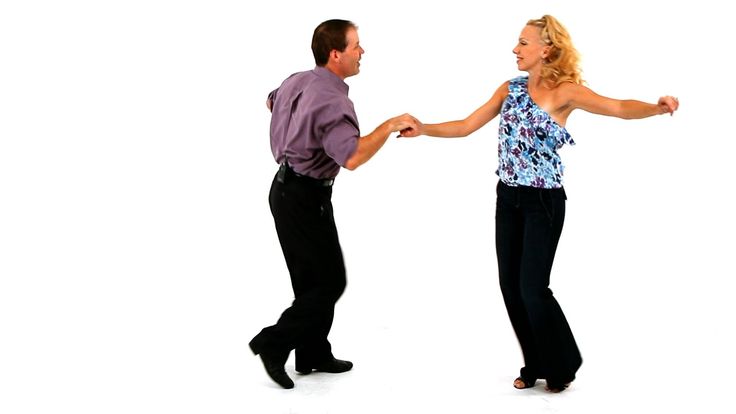 After a dozen lessons, you will be able to build each of your dances in a new way without memorizing specific patterns. And most importantly - you can dance anywhere in the world with any person.
After a dozen lessons, you will be able to build each of your dances in a new way without memorizing specific patterns. And most importantly - you can dance anywhere in the world with any person.
Immediately a number of directions are included in the concept of "swing dance". Some of them have already received their recognition. For example, you may have heard about Charleston, Lindy Hop (double jazz) or Boogie Woogie (rock and roll). At the same time, dances such as blues, shag or balboa are still unknown to many. All these styles are related, emerged in the course of the historical and cultural development of society, and differ only in the features of body position, movement or pair interaction.
However, in regular schools they are taught separately. In our opinion, this narrows the horizons of students or provokes them to pay for and attend the lessons of several teachers, from whom they often hear the same thing. We do not agree with this approach and can proudly say that Swing. School is the first dance school in the world where all swing dances are gradually studied in each group.
School is the first dance school in the world where all swing dances are gradually studied in each group.
Details
Lindy Hop
Lindy Hop is the most popular of the couples swing dances. He was born in New York in the 1920s and was especially popular a decade later: he was danced in huge halls, often to live bands-orchestras. After it was forgotten, but it began to be revived in the late 80s - and now the Lindy Hop is popular and danced all over the world.
It dances to both fast and slow jazz, which opens up space for variety and gives you the freedom to relax and release all your energy. Improvisation and freedom are exactly about him, which distinguishes him from ballroom dancing, for example. It is quite simple, which allows you to start dancing right after a few lessons.
Details
Boogie-woogie
What is "boogie"? Both music and dance. It can be graceful and slow, or dynamic and fast.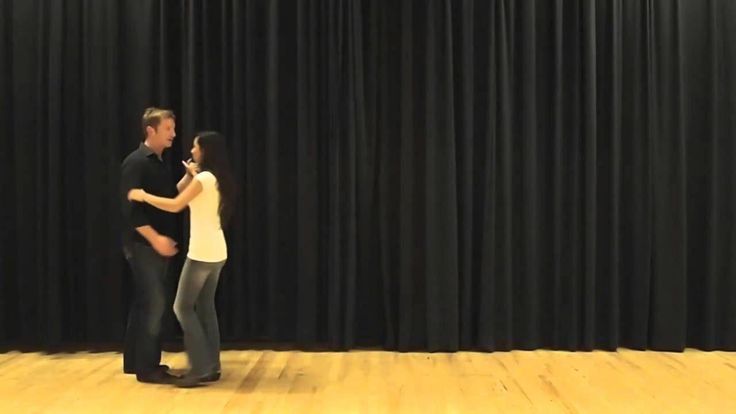 It can also be danced to jazz, but rock and roll is much more popular here. Along with the Lindy Hop, it is one of the most popular pair dances; he appeared at its base and a little later, around the 40s.
It can also be danced to jazz, but rock and roll is much more popular here. Along with the Lindy Hop, it is one of the most popular pair dances; he appeared at its base and a little later, around the 40s.
As light as a Lindy, it has its own characteristics and depth. And there are a lot more spectacular tricks there: next to the boogie is acrobatic rock and roll - a whole separate sports world!
Details
Colligate Shag
There is some debate, but it is believed that the Colligate Shag is the oldest of the swing dances. There are also discussions about what exactly was called the step before, because although it was common throughout the United States, it was danced in different ways. Now one of its versions is popular, and the prefix Colligate (collegiate from English - university) was taken because of its popularity with students.
In terms of lead-follow, step is somewhat similar to lindy and boogie, but it differs in its dynamics and, most importantly, tempo. The shag is always danced to fast music, both jazz and boogie; at the same time, it retains its lightness and accessibility.
Details
Balboa
Balboa is another swing dance style. He dances to very, very fast music - sometimes even the shag dancer can't keep up with them! And he is also distinguished by a close position and a cloud of rotations. This couple requires a minimum of space: balboas danced in crowded halls, and everything in the dance was miniature and neat.
Inconspicuous from the outside, the Balboa is stunning on the inside; not every dance can boast such complex and interesting nuances of leading-following.
Details
Blues
You must have heard about blues music, but there is also such a dance - the slowest of all swing dances. It is often, but by no means always sad: the blues can be both cheerful and cheerful, but always soft. Viscous and smooth, he asks to move as if in honey.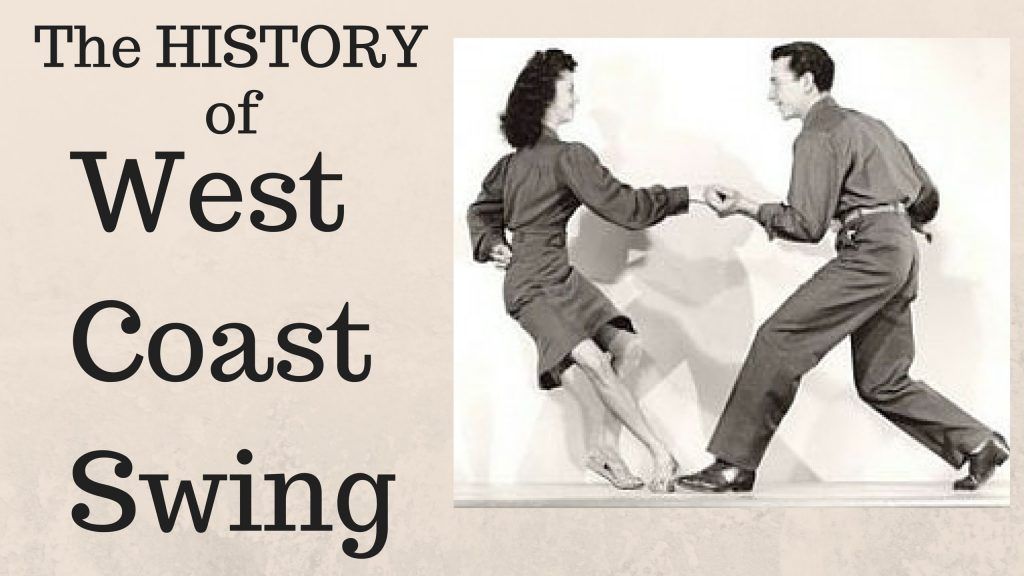
Blues is danced a lot in close position, like balboa, but there are no spins like there. You can move a lot, but you can - a little; as in other swing dances, there is a lot of room for improvisation.
Details
Solo Jazz
You can dance to swing not only in pairs. Solo Jazz - the ability to dance alone, anytime, anywhere. It's not the same as modern jazz; although the whole body is also involved here, jazz solos have their own rhythms. There is an alphabet of movements here, but the dance is not limited to them, because jazz solo is an absolute improvisation from free steps.
Solo also helps to improve overall dance technique, gives you a better understanding of your body and music. In addition, its elements are used in paired swing dances, such as lindy hop and balboa.
Details
Double Charleston
Charleston is the first thing that comes to mind when we talk about the dances of the Roaring 20s. They say it was named after the city of Charleston in South Carolina, although in fact there are two cities with this name in the USA.
In the 1920s and 1930s Charleston was especially popular, but its style gradually changed. Everywhere, only peppy dynamics and tempo were preserved: as a rule, it is danced to fast jazz. Often it is mixed with the Lindy Hop, with which it shares many points in the lead-follow and general principles of the dance.
Details
St. louis shag
St. louis shag is a paired swing dance, which is quite different from its "colleague" in name, the collageite shag. It is named after the city of St. Louis in Missouri and is a direct "descendant" of the Charleston, from which it partially took the steps on which it is now danced.
Just like it was with Colligyite, in different places it was danced in different ways, and also to different music: at first it was jazz, then rock and roll was added. One thing is invariable - it is fast and fun.
Details
West Coast Swing
West Coast Swing is a couple dance that developed on the West Coast of the USA. Now it is also acquiring the name Modern Swing. This is because, unlike other styles of swing, it is often danced to contemporary music and not danced to jazz at all.
West Coast is the heir of the Lindy Hop, so many of the movements and principles of lead-follow remind us of the Lindy. However, it has its own style and features that make it unique.
Details
Charleston
Charleston - according to legend, named after the city of the same name in South Carolina - often dance not only in pairs, but also solo. An explosion of popularity happened to him as an ambassador of the musical "Runnin' Wild", shown in 1923.
Solo Charleston, like doubles, has different styles; the most famous of these is the Charleston of the 20s, which is distinguished by expressive twists in the legs.
